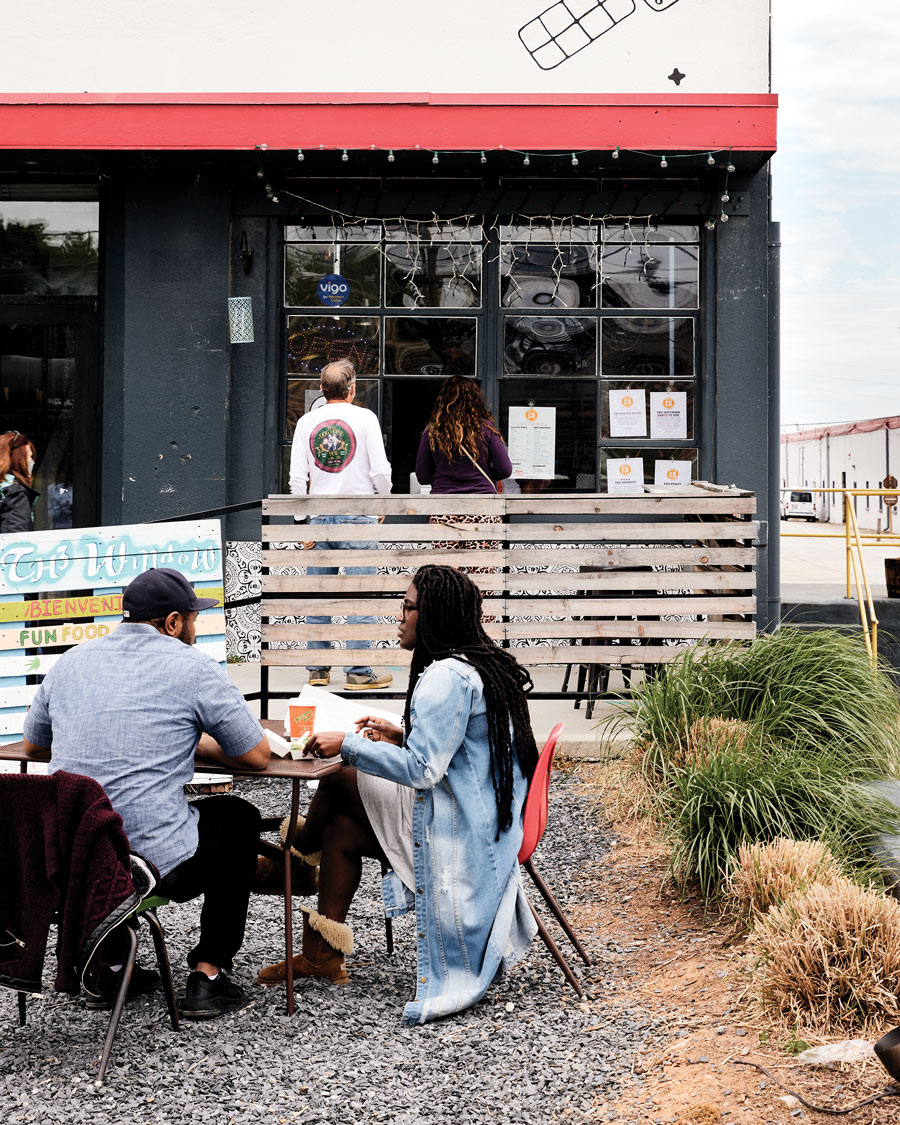
Photograph by The Sintoses
Consider the different meanings of the word idle, starting with the least savory. Cars sitting in place, engines running—stuck in traffic, say, or at a fast-food drive-thru—contribute a not-insignificant amount to annual global greenhouse gas emissions. Last year, when vehicles were off the road and factories idled, emissions dropped, offering a tantalizing glimpse of an environment headed in the right direction, if still under some duress. Of course, those emissions already have bounced back.
Still, there are other ways in which pandemics can leave a mark for the better. In Slate last year, Vanessa Chang described how past public-health crises affected the built environment: Early in the last century, doctors prescribed rigorous indoor hygiene, fresh air, and sunlight for tuberculosis patients, influencing architectural modernism’s emphasis on clean lines and minimal clutter. “A house is only habitable when it is full of light and air,” said Le Corbusier, the Swiss architect.

Photograph by The Sintoses
What will be the long-term effects of these last, long months? One pandemic adaptation I’m hoping will prove permanent is the walk-up window, an adjustment made by many restaurants and cafes. The bakery in my neighborhood shut down for months; when it reopened, it was with a brand-new sliding window facing the street. Along with my neighbors, I waited happily in line for cookies as traffic whizzed past behind us.
It wasn’t just about being able to eat cookies again. The window lent the street a new sense of vibrancy, as walk-up windows across Atlanta are doing. Quickly, it felt less like a forced adaptation than a happy embrace of the outdoors, mixing food with fresh air and sunshine and blurring the distinction between public and private. Like the city blocks that shut down so restaurants could expand their open-air seating, the walk-up window encourages street culture. Outside is a place anybody can be—especially the sidewalk, which everybody owns. You don’t buy your way onto the sidewalk; you don’t pay to stroll by. The window has a democratizing effect.

Photograph by The Sintoses
The walk-up window, maybe, could embody the spirit of the 21st century—the climate adaptation century, when we rethink our relationship to the outdoors—in much the same way the drive-thru represented the benighted 20th: the plastics century, the Silent Spring century, and, yes, the automobile century. Idling in line to get oyster po’boys and sazeracs at Bon Ton’s walk-up window is the opposite of idling at a McDonald’s drive-thru—an essentially solitary experience, each driver trapped in their own little emissions generator. (And anyways, if you must stay in the car, there are far better options.) Waiting at a walk-up window doesn’t have to be a social experience, but it could be. Even if you’re just looking at your phone, you’re outside and among others—a kind of idle time that, in its small way, encourages us to think differently about the spaces we move through. There is the possibility of spontaneity, even joy. You could meet a dog, or several dogs. Maybe somebody walks by playing the accordion. I don’t know! But you have to get in line to find out.

Photograph by The Sintoses
This article appears in our June 2021 issue.













